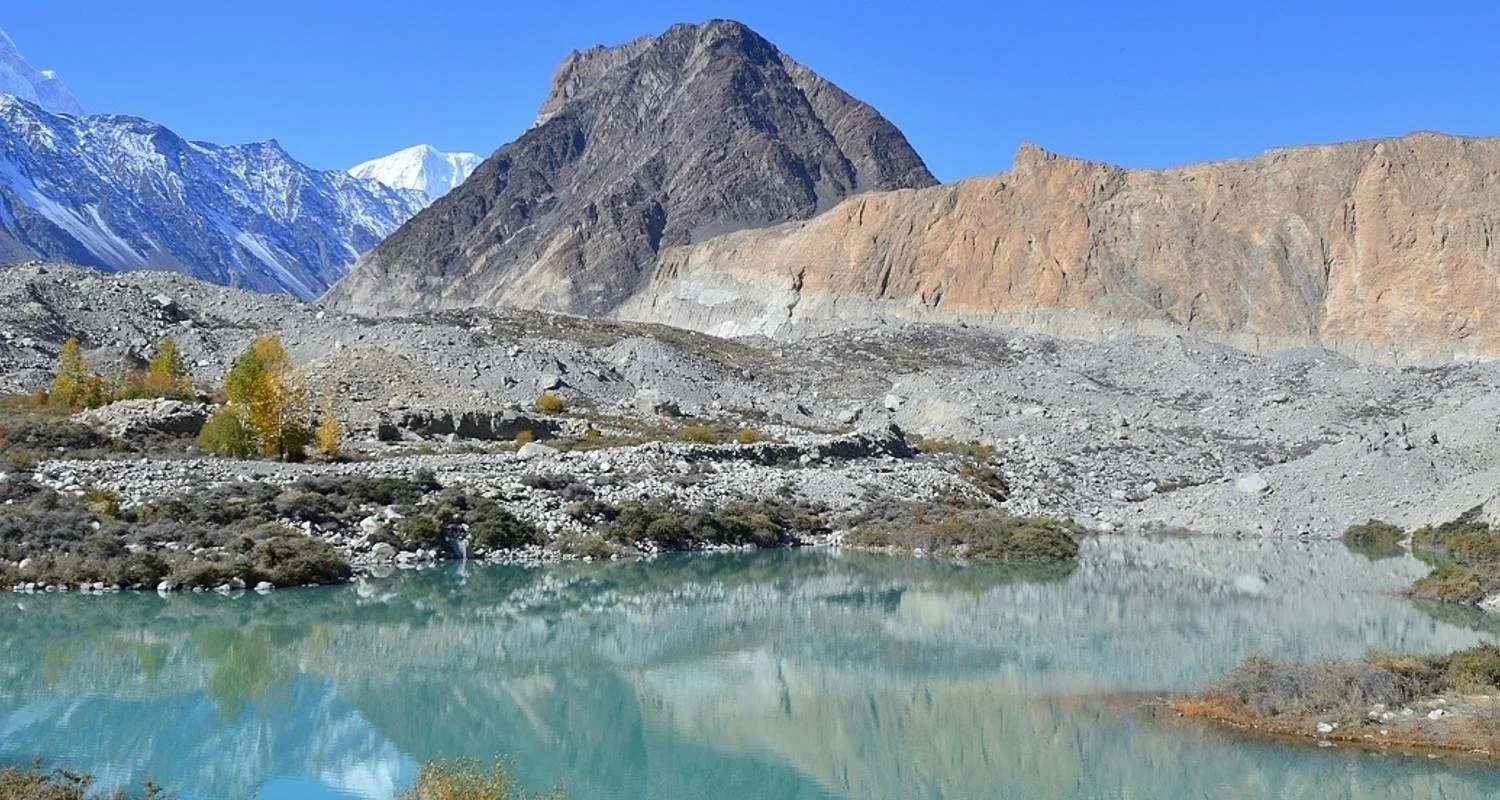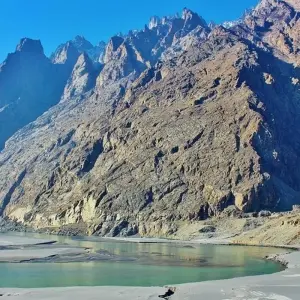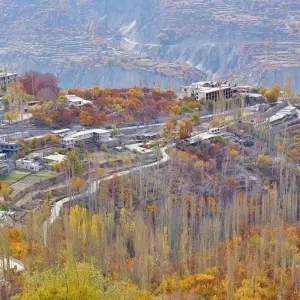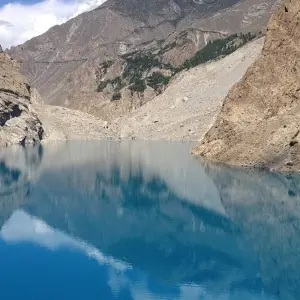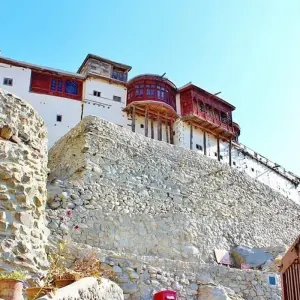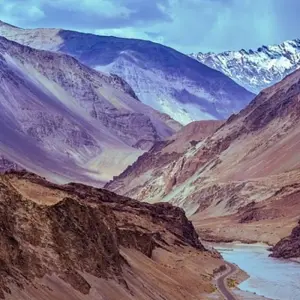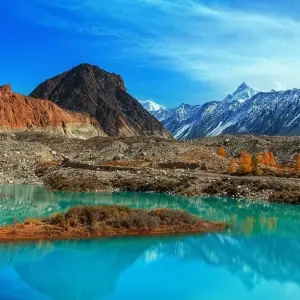Day 1
Jour 1 : Arrivée à Kashgar
Welcome to China! Upon arrival in Kashgar, you will be met and transferred to your hotel. For those who wish to arrive a day early, we recommend a day trip out to Shipton’s Arch (2.5 hours each way), reputed to be the world’s tallest natural arch.
Kashgar is an important trading town in the far west of China, close to the borders with Pakistan and Kyrgyzstan. It has been the epicentre of regional trade and cultural exchange for more than two millennia. The remoteness has helped to preserve the unique character of the city. Explore the streets of the old city centre, which is unfortunately becoming smaller and smaller with the development of new housing. This small section of the ‘real’ Old Town is unlikely to survive for much longer. Despite these changes, the spirit of Kashgar lives on. Uighur craftsmen and artisans still hammer and chisel away as they have done for centuries, traders haggle over deals in the boisterous bazaars and donkey carts still trundle their way through the narrow alleyways.
Enjoy dinner tonight at a local restaurant. (D)Overnight – Kashgar Qinwak Hotel or similar
Note – Access to Shipton’s Arch was stopped from end of 2024 due to restorations to the pathway, with it estimated to be opened again mid-2025.
This morning you will have the opportunity to visit Kashgar Bazaar, which is famous all over China, as many nomads of the region venture here to sell their animals and buy the necessities of daily life. A famed trading spot on the Silk Road for centuries, it is fascinating to experience (note: the animal bazaar is only open on Sundays).
Continue to Id Kah Mosque, built in 1442, and the largest Mosque in China. Located in the centre of Kashgar, the complex now occupies nearly 17,000 square metres, surrounded by handicraft streets. Then, visit Abakh Khoja Tomb of Xiangfei, a Uiygur woman who was married as a concubine to one of the emperors of the Qing Dynasty. After she died her body was transferred back to Kashgar and buried in the family tomb, built in 1640 with a very deep affection for Islamic architecture. (B,L,D)
Overnight – Kashgar Qinwak Hotel or similar
Day 3
Jour 3 : Kashgar - Lac Karakuli - Taxkorgan
Today you will transfer (approx. 200km/4 hrs 40mins) to Karakuli Lake, the highest alpine lake in the world. Karakul means ‘black lake,’ in reference to the dark colour reflected on the lake’s surface when the sun is hidden by clouds. At an altitude of 3,600m, it is the highest lake of the Pamir Plateau, near the junction of the Pamir, Tianshan, and Kunlun Mountain ranges. The lake has two basins separated by a peninsula in the south and an island in the north. The three highest peaks visible from the lake are the Muztagh Ata (7,546m), Kongur Tagh (7,649m), and Kongur Tiube (7,530m), which remain snow-capped throughout the year. Enroute, we will stop at Baisha Lake, also known as White Sand Lake for its white, sandy shores.
After lunch, drive to Tashkurgan (100km, 1hr40m), meaning ‘Stone Fortress’ or ‘Stone Tower’ in the Turkic language. The official spelling of the town is Taxkorgan. The stone city is in the northeast of Taxkorgan, a significant castle ruin on the ancient Silk Road. The old fortress was built on a precipitous hillock. Outside the castle are broken city walls, built with huge rocks stretching for 1,300m around the city. The walls once stood 6m high and between 1-3m wide, and the remains of the four watchtowers are now crumbled on the earth. On the southeast of the city, discover the ruins of a temple where pottery, Tang coins, and silk weavings have been excavated. (B,L,D)
Overnight – Qian Hai International Hotel or similar
Day 4
Jour 4 : Taxkorgan - Passage de la frontière avec Sost, Pakistan - Passu
Today, transfer to the border of Taxkorgan where you will farewell China and travel via public bus to Sost, Pakistan (200km, 7-8hrs). Note that there will be no guide for the border crossing on this public bus from Taxkorgan to Sost. Upon arrival into Sost, you will be met by your guide and transferred to to Passu (36km, 35 min) with several photo stops on the way. One of the oldest settlements in Hunza-Gojal, Passu is said to suffer a kind of geographical curse preventing it from growing into a town. At one time, Passu had extensive orchards, a polo field, and nearly five times its present population. But as glaciers periodically dammed the Shimshal River, which then broke, causing floods that gradually tore away Passu’s riverfront land. A mudslide in 1974 at Shishkut Nala created a lake that submerged parts of the village and choked the valley with sand and gravel. The region today is still beautiful offering spectacular, breathtaking scenery. (B)
Overnight – Danatum Hotel or Sara Silk Route Hotel, Passu or similar
Today is yours at leisure to explore the quaint village of Passu and the surrounding region rich with stunning hiking trails. Here you will have free time, however if most of the group are interested in doing the same activity, your driver and guide will be available to you. Otherwise, you are able to make your own way to your preferred location. We would suggest a visit to the Passu Glacier, also known as Glacier Breeze. Upon arrival at the Glacier Breeze, you will see stairs stretching uphill that will lead you to the Glacier Breeze Restaurant, famed for serving delicious apricot cakes. It is also a great spot to see the Passu Cones, and the cool breeze from the water of the Passu Glacier is refreshing.
If you really want to get your adrenaline rushing, we also suggest that you head to the rope bridge near the town of Husseini, only 10 km away. The local people of Hussaini village, especially the women, often use this dangerous bridge to cross the river to Zarabad, which is another gem for trekking lovers. Known as the most perilous bridge in the world, the Hussaini Suspension Bridge may look dangerous; however, it is a comparatively benign bridge and attracts hikers challenging their nerves as they prudently work their way across. (B)
Overnight – Danatum Hotel or Sara Silk Route Hotel, Passu or similar
Day 6
Jour 6 : Passu - Vallée de Hunza
Following breakfast, continue your journey toward the Hunza Valley (approx. 2hrs), crossing the newly formed Attabad Lake. This 30km long lake was only formed in 2010 after a massive landslide dammed the Hunza River completely; its fresh, crystal-clear water is mesmerising. From here, continue onto the Hunza Valley. Often referred to as heaven on earth, this jaw-dropping region is enveloped in the grand Himalayas and the Karakoram Mountain ranges.
Your hotel in the Hunza Valley is very basic, however more then made up for you by the view. (B)
Overnight – Eagles Nest or similar
Day 7
Jour 7-8 : Vallée de Hunza
You have two full free days in Hunza, with opportunities to explore local life in the valley. You can visit the ancient forts of Baltit and Altit, the traditional residences of the Mirs of Hunza. This can be followed by a walk on the high irrigation channels cut into the rock, offering tremendous views and an insight into how the people of Hunza created their Shangri-La. You may also visit Ganish (14km) one of the oldest villages in Hunza and a UNESCO World Heritage site. Ganish is over 1,000 years old, and it’s known for its well-preserved ancient houses, watchtowers, and mosques. The village is an incredible window into Hunza’s past, offering a close-up look at the cultural heritage and architecture of the region’s early settlers. A walk through its narrow alleyways lined with intricately carved wooden structures provides an authentic sense of the area’s history and traditions. (B)
Overnight – Darbar Hotel or Offto Resort or similar
Day 8
Jour 9 : De Hunza à Hoper
Today you will hike to the Hoper Valley, a scenic portion of the Nagar Valley in Gilgit-Baltistan. It is about 10km away from Nagar Khas, the principal city of the Nagar Valley. Hoper Valley is home to the Spantik and Hoper glaciers. The valley has several natural formations, including glaciers, lakes, and high mountains. There are three glaciers in the valley: Hoper Glacier, Barpu Glacier, and Mier Glacier. Trek to Mier Glacier for some of the country’s most incredible scenery (trekking: easy-moderate. 3-4 hours uphill, 2 hours downhill). (B,L,D)
Overnight – Hoper Inn Hotel or similar
Note: Accommodation here is very basic with no hot water
Day 9
Jour 10 : Vallée de Hoper - Gilgit - Fairy Meadows
Today you travel to Fairy Meadows, one of the most beautiful places in northern Pakistan. First you drive to Gilgit which can be done in two hours, but with such spectacular scenery, there will be plenty of stops along the way, including the viewpoint at the bottom of Rakaposhi, which sees the mountain hanging 6000 metres above the road. The road from Gilgit to Fairy Meadows will take you through the point where the three great mountain ranges of Karakoram, the Hindu Kush, and the Himalayas meet.
Cutting deep through the valleys, the Karakoram Highway crosses the Raikot Bridge, and from there, it is a hair-raising one-hour jeep drive followed by a two-hour trek to Fairy Meadows. You can opt to leave your luggage with your main driver and carry only a day pack with some essentials or take it all with you via donkey when you hike (cost is approx. $1 per kg, paid locally). The trekking is considered moderate to tough, with 2 hours of uphill at altitude, often in single file due to the narrowness of the path. Some sections of the hike are along the cliff edge and may be challenging for those who experience vertigo.
You will trek into Fairy Meadows (3300m), which offers a breathtaking view of Majestic Nanga Parbat (The Killer Mountain). These lush, green meadows and forests lie at the base of Nanga Parbat, at the western edge of the Himalayan range in Pakistan. Named in 1953 by Austrian climber Hermann Buhl due to its mesmerising beauty, many have called this region ‘Heaven on Earth’.
While beautiful and undoubtably a highlight of the itinerary, Fairy Meadows is becoming more popular with tourists, which has led to a rubbish problem. Please ensure you do your part and dispose of rubbish correctly. (B)
Overnight – Wooden log huts (Raikot Sarai) or similar
Day 10
Jour 11 : Les prairies des fées
A soft trek of two to three hours, walking through the dense pine forest and later through birch trees and along shallow streams, takes you to Beyal, a summer settlement of shepherds with stunning views of Nanga Parbat – 8125m. Hike to base camp crossing trails of glaciers with well-identified tracks. Enjoy nature at its best before returning to your hut. (B)
Overnight – Wooden log huts (Raikot Sarai) or similar
Day 11
Jour 12 : Fairy Meadows - Babusar Pass - Naran
This morning, trek back to the jeep (2-3hrs, downhill – moderate to tough) and head back to the Karakoram Highway and onto Chilas (70km, 2hrs). Here you will drive over the Babusar Pass and into the scenic Kaghan Valley (115km, 3.5hrs), a jewel among the many beautiful valleys in the Mansehra District of Hazara. Lofty peaks crown the mountain ranges on either side like turrets, ranging in height from 12,000 to 17,000 feet. Encounter the Gujar nomads of the Kaghan Valley. You will find them camped along the road in their traditional tents and moving up and down the valley with their herds of sheep and goats as they take them to higher pastures of the upper Kaghan Valley in spring and bring them down again in autumn. (B)
Overnight – Northern Retreat Naran or similar
Day 12
Jour 13 : Lac Saif-ul-Maluk
This morning, you will visit the legendary lake, Saif-ul-Maluk Lake at 3200m via local jeeps (12km,1hr each way). Malika Parbat (5271m), the highest peak of the valley, towers over the lake and offers incredible photography opportunities. Continue to Lalazar (30km, 1.5hrs each way) at an elevation of 3,123m (10,246 ft) above sea level, located in the upper Kaghan Valley in the Mansehra District of Khyber Pakhtunkhwa province of Pakistan. It can be found to the southwest of Batakundi. The track is 4.2 km long with incredible landscapes, pine forests, scenic views, and charming weather. It’s a typical Pakistani mountain road, with hills on one side and the Kunhar River on the other side. (B)
Overnight – Northern Retreat Naran or similar
Day 13
Jour 14 : Naran - Islamabad
Today’s drive will continue through the Kaghan Valley and onto the Karakoram Highway arriving at the capital of Pakistan – Islamabad (270km, 6-7.5 hrs). A late 20th-century capital city, Islamabad is laid out in straight lines and right angles: a proud metric showcase of government and administration. (B)
Overnight – Hill View Hotel or Welcome Hotel or similar
Today enjoy a day trip to one of South Asia’s richest archaeological sites, Taxila. A fascinating place for those who have an interest in Buddhism and the art of Gandhara. The city excavations, most of which are found around the museum, are open to the public, along with dozens of smaller sites over a 25-sq-km area.
Gandhara is the historical name for the Peshawar Plain, and Taxila has always been one of Gandhara’s more important cities. In the 6th century BC, the Achaemenians made Takshashila (Taxila) the Gandharan capital, at a site now called Bhir Mound. In 326 BC Alexander the Great paused here en route to India. The Mauryan emperor Ashoka, a patron of Buddhism, built a university here, to which pilgrims and scholars came from all over Asia. In about 180 BC, Bactrian Greeks developed a ‘new’ Taxila, at the site called Sirkap.
In the 1st century AD came the Kushans, building their own city at the Sirsukh site. Until the 3rd century, Taxila was the cultured capital of an empire stretching across the subcontinent and into Central Asia. It was the birthplace of a striking fusion of Greek and Indian art, and the place from which Buddhism spread into China. The city fell into obscurity after it was destroyed by White Huns in the 5th century. The modern-era excavation of the site was led by Sir John Marshall between the years of 1913 and 1934.
It is important to note that Taxila is a vast site requiring extensive context behind it – due to its size not all parts will be able to be visited. We encourage guests interested in this site to do their own personal research before visiting and to contact us prior to travelling if you have any specific interests to see how they might be able to be accommodated. (B)
Overnight – Hill View Hotel/Welcome Hotel or similar
Day 15
Jour 16 : Islamabad - Lahore
The drive from Islamabad to Lahore will take approx. 4-6 hours (380km), including a visit to the UNESCO World Heritage site of Rohtas Fort. Lahore may not be Pakistan’s capital city, but it is considered the cultural, intellectual and artistic hub of the country. If history and architecture are your passions, there is an interesting mix of formidable Mughal monuments to faded legacies of the British Raj. Even a ramble around the Old City can unfold into a mini adventure. Lahore also has qawwali (Islamic devotional singing) and Sufism (Islamic mysticism) for those in search of spiritual sustenance. (B)
Overnight – Luxus Grand Hotel or similar
Day 16
Jour 17-18 : Lahore
With two full days in Lahore and the nearby Punjabi countryside, you will be able to spend time in the narrow alleyways of the old city, including the largest medieval mosque in the world – the awesome Badshahi Mosque. You will also have the option to visit the fort, Shalimar Gardens, and the Lahore Museum.
In the afternoon, venture out of Lahore to the Indian border at Wagah (30km, 1hr each way) to witness the Indian and Pakistani border guards lower their flags in the daily flag ceremony. (B)
Overnight – Luxus Grand Hotel or similar
Day 17
Jour 19 : Lahore - Wagah
This morning after a leisurely breakfast, you will have one last chance to explore Lahore before transferring to the Wagah border and crossing to India (approx. 4-6hrs). You will take a public bus for the border crossing (unaccompanied by a guide) and will meet your Indian guide after crossing the border. You may wish to pay approx. 100 PKR for a porter to carry your luggage to the start of ‘no man’s land’. You must then carry your own luggage through ‘no-man’s land’ and join a bus to reach the Indian side where you then walk a little further until you clear security and immigration.
You will then be transferred to Amritstar to check into your hotel. (B,D)
Overnight – Ranjit’s Svaasa or similar
Day 18
Jour 20 : Amritsar
Today you will explore the city of Amritsar, founded in 1577 by the fourth Sikh guru, Ram Das, and home to Sikhism’s holiest shrine, the spectacular Golden Temple. You will visit Jallianwala Bagh, reached through a gatehouse on the road to the Golden Temple. This poignant park commemorates the 1500 Indians who were killed or wounded when a British officer ordered his soldiers to shoot unarmed protesters in 1919. Some of the bullet holes are still visible in the walls, as is the well into which hundreds desperately leapt to avoid the bullets. There is an eternal flame of remembrance, an exhibition telling the stories of victims, and a Martyrs’ Gallery, with portraits of Independence heroes.
This evening, visit the Golden Temple. Floating at the end of a long causeway, the Golden Temple itself is a mesmerizing blend of Hindu and Islamic architectural styles, with an elegant marble lower level adorned with flower and animal motifs in pietra dura work (as seen on the Taj Mahal). Above this rises a shimmering second level, encased with intricately engraved gold panels, and topped by a dome gilded with 750kg of gold. In the gleaming inner sanctum (photography prohibited), priests and musicians keep up a continuous chant from the Guru Granth Sahib (the Sikh holy book), adding to the already intense atmosphere. After paying their respects, pilgrims retreat to the intricately painted gallery on the second level to contemplate. (B,D)
Overnight – Ranjit’s Svaasa or similar
Day 19
Jour 21 : Amritsar - Vol pour Srinagar, Cachemire
Following breakfast this morning, you will be transferred to the airport for your flight to Srinagar, Kashmir (50m). Rimmed by layers of alpine peaks, the 140 km-long Kashmir Valley opens as a giant, flat upland bowl of lakes and orchards. Tin-roofed villages guard terraced paddy fields, apple groves and pin-straight poplars. Proudly independent-minded Kashmiris mostly follow a Sufi-based Islamic faith, worshipping in distinctive box-shaped mosques with central spires. Some Kashmiris have startlingly green eyes and in winter, Kashmiri men traditionally keep warm by clutching a kangri (wicker fire-pot holder) beneath their flowing grey, brown pheran (woollen capes).
Upon arrival, you will be met and transferred to your houseboat (20km, 1hr), which is permanently docked along the shore of beautiful Dal Lake, the city’s greatest drawcard. A bright array of houseboats forms a particularly colourful scene and the famous Mughal gardens are strung out over several kilometres around the lake. (B,D)
Overnight – Bostan Gulistan Houseboat or similar
Day 20
Jour 22 : Les jardins moghols et le fort de Hari Parbat
This morning, explore Srinagar’s stunning Mughal Gardens. Dating back to the Mughal era, most share a similar design with terraced lawns, fountain pools and carefully manicured flowerbeds interspersed with chinar trees, pavilions and mock fortress facades. The most famous garden is Shalimar Bagh, built for Nur Jahan by her husband Jehangir, it lies 10km beyond Nehru Park. With steeper terracing and a lake-facing panorama, Nishat Bagh is also very impressive.
From here, continue to the Hari Parbat Fort (outside viewing only). This prominent hilltop fort was briefly fortified in the 6th century and once again by Emperor Akbar in 1590, but most of what you see today dates from the 1808 constructions of Pathan governor Atta Mohammad Khan.
This evening, enjoy a sunset shikara ride on the lake. Dal Lake is famous not only for its beauty but for a lifestyle that is unique to anywhere else in the world. The houseboat and shikara communities have lived for centuries on Dal Lake – some of the locals have never stepped foot on land! Doctors, tailors, and bakers – you’ll see them all in tiny wooden shops on the lake, near picturesque vegetable gardens and acres of lotus gardens. A shikara ride is one of the most soothing, relaxing activities in Kashmir. A shikara is a gondola-type light rowing boat, and the two-hour boat ride takes you on a relaxing sightseeing tour of the interior parts of the calm and placid waters of Dal Lake. While on the shikara, you may observe white-breasted Kingfishers, large striking birds with robust bills perched on the branches of willow trees. These birds concentrate their efforts on hunting in the floating gardens. These man-made islands comprise reeds, willow rods and aquatic vegetation, held together with mud from the lake bottom. (B,D)
Overnight – Bostan Gulistan Houseboat or similar
This morning following breakfast, it is time to be transferred to the airport for your onward flight. If you would like to stay on and explore deeper into Kashmir and perhaps Ladakh, we can assist you with your onward travel plans. (B)

